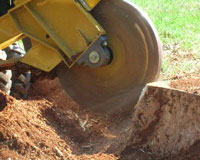Cankers are a fungus disease caused by a number of different pathogens and attack many varieties of trees. The following are general diagnosis and treatment practices.
Symptoms
The disease is usually inconspicuous at first but once it gets started it first kills scattered twigs and then proceeds rapidly. Cankers form in all sizes and ages of stems. Cankers range in size from small brown spots to large lesions that involve both the bark and the cambium (formative layer under the bark). Many cankers girdle twigs and branches causing die back. The fungus may then move down into larger stems and cause perennial cankers possibly girdling the tree trunk causing premature yellowing of leaves, premature leaf drop and possible death.
Canker diseases are most often spread in the spring and are most apt to attack those trees and ornamentals growing in infertile soil, weakened by insects or drought and on wounded plants (hail, construction, etc.). Canker diseases are most abundant in landscaped environments.
Treatments
Canker disease has a high death rate to trees and ornamentals. Canker diseases can attack most varieties of trees but are more prevalent in poplar, willow, spruce, cottonwood, aspen, maple, locust, elm and russian olive.
When cankers are diagnosed in a tree, the tree should be microinjected with a fungicide. If the tree appears to be in poor condition it would be recommended to microinject a combination of a fungicide and a fertilizer to give the tree a quick boost.
To build vigor in the tree, a deep root feeding in the fall and very early spring is recommended. The two following springs a microinjection of a fungicide is recommended to suppress the canker disease and allow the plant to overcome the symptoms.
A three year program of proper fertilization, watering, and pest control will help the tree repair and maintain its’ vigor. Should the tree not show a positive response or stabilize after the first or second fungicide injection, it is an indication the disease has progressed too far to be controlled. It would be a waste of resources to microinject the tree only once (even if the response is good) and not follow up with the two consecutive spring treatments.


